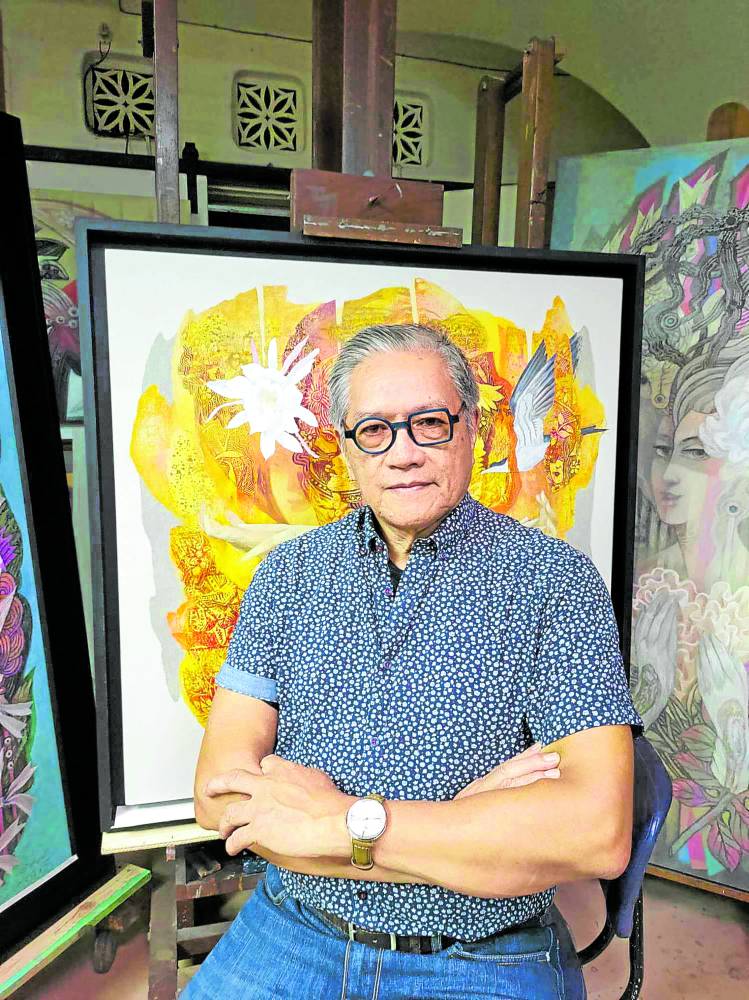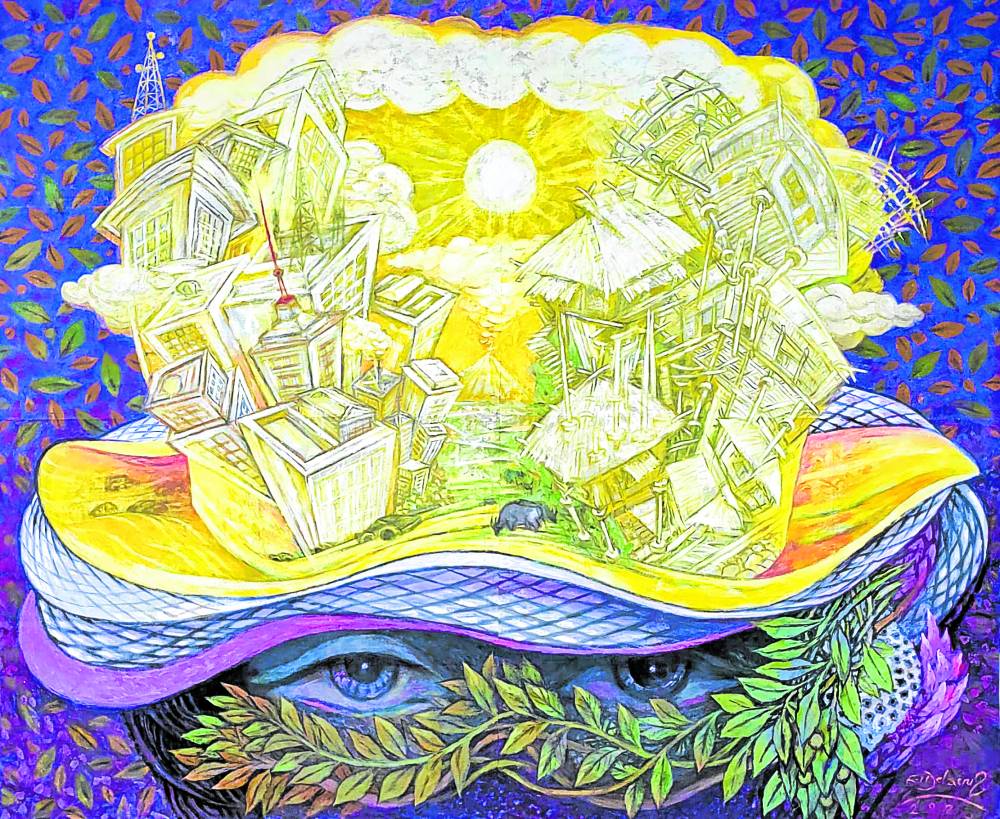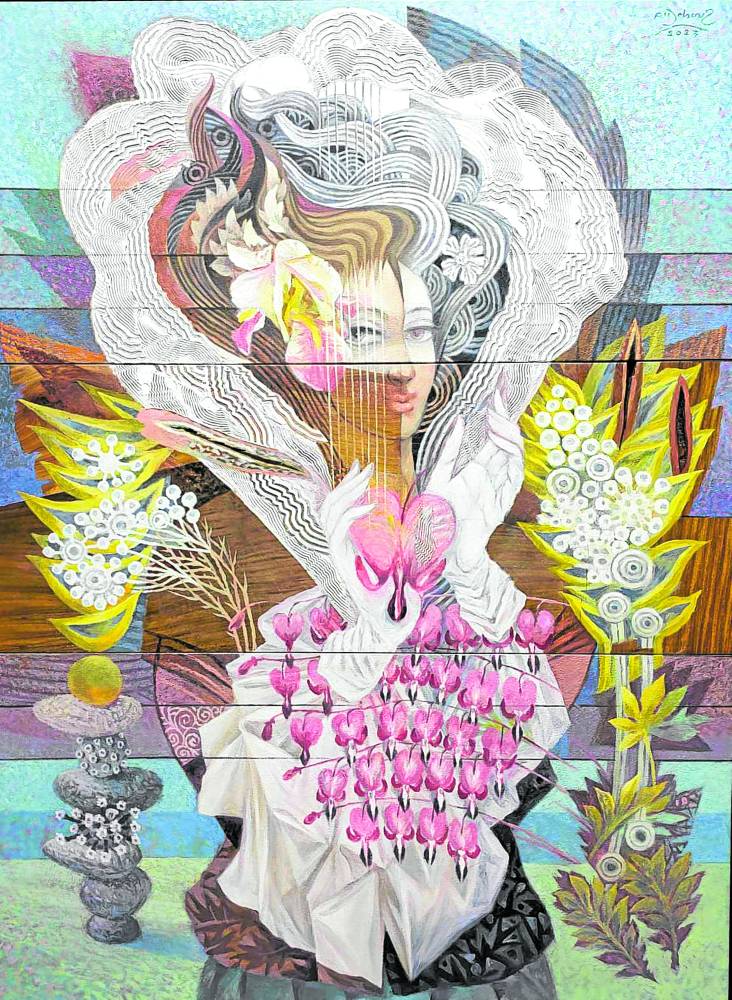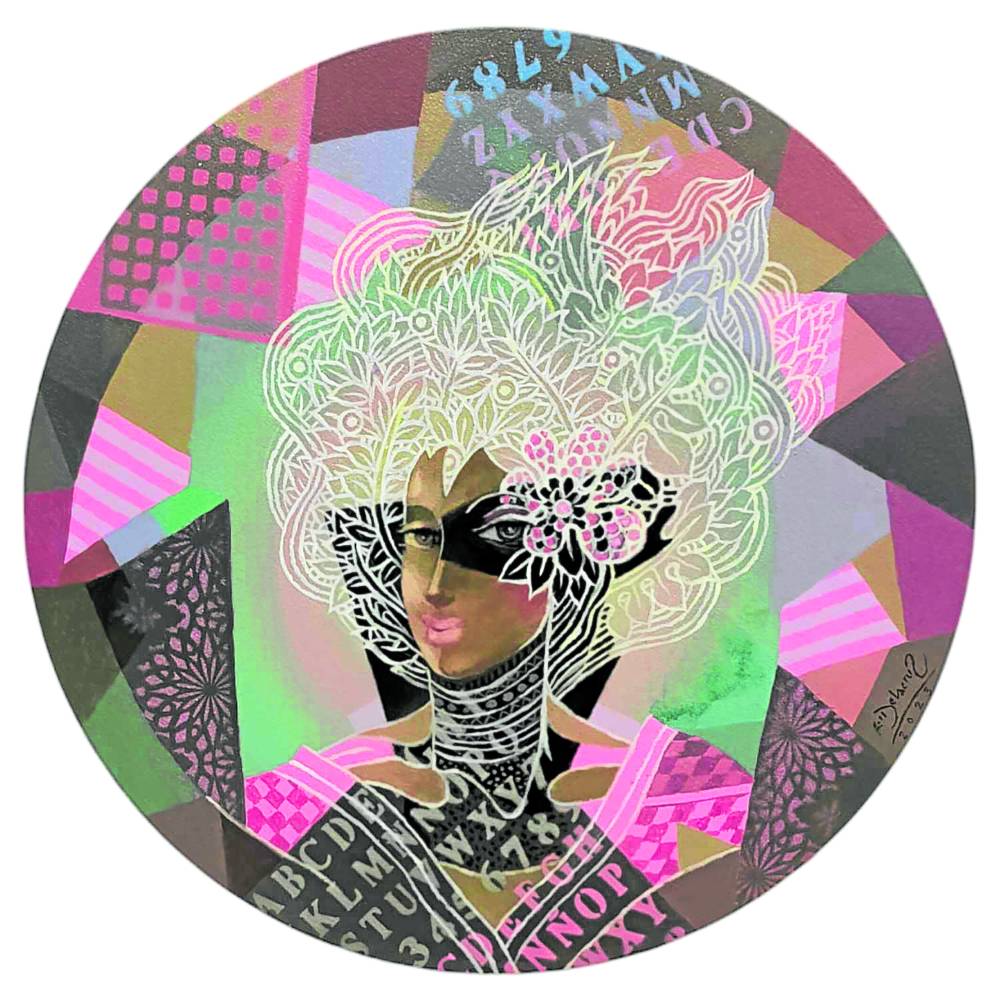
There’s a celebratory air to the 40 artworks by Fil Delacruz that line Gallery C of Conrad Hotel. Part of the hotel’s “Art and Wine” series of exhibits, “Woman/Nature” presents in various shapes and mediums, in colors dulcet and gorgeous, Delacruz’s signature “Diwata” works, delving into the link between woman and nature, the fertility complementing both womb and earth, the rich flora and fauna that the latter teems with, as symbolized by the fecundity of the former.
Delacruz’s art works are a rich harvest indeed.
Although paintings dominate the exhibit, there are a number of prints, especially hand-painted relief and chine-collé. Delacruz explained the exhibit is a merging of the two sides of his artistic psyche, as painter and as printmaker. The two, however, are in the service of his own signature diwata, the universal woman in her many dimensions—as mother and life force, as lover, as divinity and as artistic muse.

Ethereal images
Although the Diwata is presented as a woman often surrounded by rich flora, Delacruz said they’re ethereal images that are more symbolic than actual. They’re also presented in all their duality, combining both light and dark, good and evil, negative and positive.
The convergence of painting and printmaking in “Woman/Nature” mirrors the duality explored within the theme, showcasing broad brushstrokes of color alongside intricate printed details, offering a captivating amalgamation of art forms.

Delacruz’s genius unfolds in various shapes and sizes within the exhibit. Among the prominent pieces are “Diwata: Maskara,” featuring the artist’s muse in a laced mask dividing the subject’s face, and “Diwata: Bahay Kubo, Bahay Bato,” which contrasts the rustic and the modern, the rural and the urban, repose and racket, contemplation and action. In the oil-on-canvas-and-wood plank “Dicentra Spectabilis,” the diwata’s breast is bedecked with the bleeding heart (whose scientific name is the eponymous title). The drooping, heart-shaped pink petals contrast with the rest of the richly detailed flora in the painting.
Cultural tapestry
Drawing inspiration from the lush landscapes of Southern Cotabato and the cultural tapestry of the Manuvu or Manobo people, Delacruz skillfully infuses his art with elements of nature and the imagery of the Filipino female deity, Diwata. Initially influenced by a young woman named Gunzal, a Manuvu native, the series has evolved across decades, transitioning from vintage mezzotints to lithographs and finally to oil-on-canvas renditions. This evolution mirrors not only Delacruz’s technical mastery, but also his stylistic engagement with Filipino modernism and classical influences.

Delacruz’s artistic evolution goes beyond mere stylistic changes; it encapsulates a deeper exploration of symbolism and cultural resonance. The series, while rooted in his personal experiences amid the political turmoil of the late 1970s and martial law, transcends individual narrative, becoming a visual testament to the nation’s collective consciousness.
In his reinterpretation of the Diwata, Delacruz invokes not just the muse but also the historian and memorialist—the essence of the muse as a custodian of memory and history. By infusing the series with elements reminiscent of classicism, Cubist deconstruction and Kandinsky’s spiritual essence of nature, he creates a cosmology that transcends the boundaries of individual artistry, inviting viewers into a realm where intuition merges with consciousness and nature intertwines with cosmology.

Ultimately, Delacruz’s “Diwata” series serves not just as a visual narrative of his artistic evolution but also as a cultural reservoir that encapsulates the spirit, history and collective consciousness of a nation. It is an embodiment of art as memory and history, restoring the original essence of the muse as a custodian of creation and universe—an homage not only to art and its powers of imagination and creation, but also to the profound depths of Filipino culture and mythology. —CONTRIBUTED
“Of Art and Wine: Woman/Nature” is on view at Conrad Manila’s Gallery C until Jan. 6, 2024.
More images in Inquirer Plus.













































